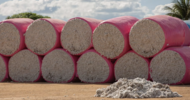Daily Times | 27 August 2017
CPEC and the Chinese interests in Pakistan
by Abdur Rehman Cheema and Muhammad Haris
Though an industrial giant, Chinese interest in Pakistan’s varied hinterland and agricultural produce draws on her need to feed a population of 1.37 billion. The USA with population of 321 million, has six times more arable land than China. In 2012, China surpassed USA to become world’s largest importer of agricultural products. Despite achieving high per acre yield, only 15 percent of China’s land area can be cultivated. China’s limited space for farming has been a problem throughout its history, leading to chronic food shortage and famine. While the production efficiency of farmland has grown over time due to modern agricultural technologies and genetically engineered crops, it is still insufficient to meet the demands of burgeoning Chinese population.
China’s aspirations of fulfilling its food needs utilising Pakistani land should prompt Pakistani authorities to do their homework, so they can also benefit from this opportunity. Some of the basic steps include registration and preservation of top Pakistani produce varieties of cereals and fruits such as rice, mangoes and dates at international forums.
The China-Pakistan Economic Corridor (CPEC) unveiled in 2013,is frequently referred to in Pakistan as a potential economic game changer. Now expected to have an outlay of $62 billion, the Chinese money will be mostly spent to improve transport links and energy cooperation between China and Pakistan.
However, with more details becoming public, CPEC has a large agriculture aspect with Chinese expected to invest in seeds, fertilisers, supply chain, livestock and agri-business chain. Large tracts of land will be leased out to Chinese firms for developing advanced planting and breeding bases.
Pakistan’s agriculture main issues are low per acre yield, soil erosion, water logging, subsistence farming, large post-harvest losses and low value addition with lack of innovation.
Now is a definite opportunity for Pakistan to learn from Chinese agribusiness technology, capacity and skills. With concentrated poverty (56 percent) in rural areas, Pakistan needs to achieve agriculture driven economic growth as nearly 40 percent of the country’s population lives in poverty. Over 75 per cent of people living in poverty depend on agriculture for their livelihoods all over the world. To ensure inclusive growth that contributes to poverty alleviation, agribusiness can serve as the main key as growth in agriculture is two to four times more powerful at reducing poverty than growth in other sectors.
Unlike subsistence farming to which the poor subscribe and live from hand to mouth, agribusiness involves collective agriculture activities including supply of agricultural inputs, production and their distribution to final consumers at a commercial level.
How Chinese involvement in agriculture will benefit the poor and help reduce poverty and would not further exacerbate inequality is yet to be seen. Of course, Chinese will look for large tracts of land where commercial farming activities can be undertaken. In Pakistan, the landholding is extremely unequal with 61 per cent of the total private holdings are under five acres and ownership of 50 acres and above are only two per cent. Majority of the landholdings, 94 per cent are in the category of less than 25 acres while only six per cent of the holdings are in the category of 25 acres and above. In Punjab and Khyber Pakhtunkhwa (KP), majority of ownership holds in category of under 5 acres, but Sindh and Balochistan have the majority ownership holds in category of five to under 25 acres.
The government and the people of Pakistan, and not the Chinese, will have to think and devise a mechanism to ensure that equity and distribution concerns of the poor are addressed. CPEC agriculture divided will also have to be leveraged, as it will help create income opportunities for the deprived and the marginalised segments of the society.
Some in Pakistan may not be happy to see the Chinese in agriculture sector and having big tracts of land — but Pakistan is not the only country where Chinese enjoy this kind of ownership. In New Zealand, the world’s largest dairy producer, China has become the third largest dairy producer by purchasing dairy farms through its conglomerate Shanghai Pengxin Group since 2011. However, the fact is publicly known and the government has set a criterion for purchase of agriculture land by foreigners — making sure that the country’s interests are protected.
China’s aspirations of fulfilling its food needs utilising Pakistani land should prompt Pakistani authorities to do their homework, so they can also benefit from this opportunity. Some of the basic steps include registration and preservation of top Pakistani produce varieties of cereals and fruits such as rice, mangoes and dates at international forums. Also, the government should open up details of the total CPEC plan including its agriculture outlay for public debate and to involve agribusiness food chain stakeholders. Making it fully transparent, not through hiding and fear but through deep and loud thinking to set up the regulatory framework for foreign investors that the country should to be taken forward.
Dr Abdur Rehman Cheema is a development practitioner and academic based in Islamabad. He can be reached at [email protected]. Connect AbdurRehmanCheema via LinkedIn.
Muhammad Haris is Programme Officer at the China Study Centre, COMSATS Institute of Information Technology, Islamabad. He can be reached at [email protected]














